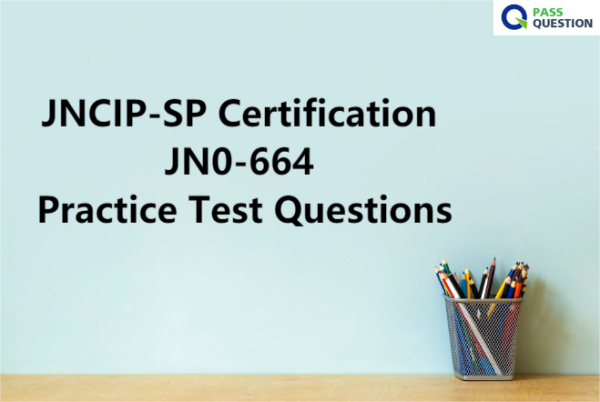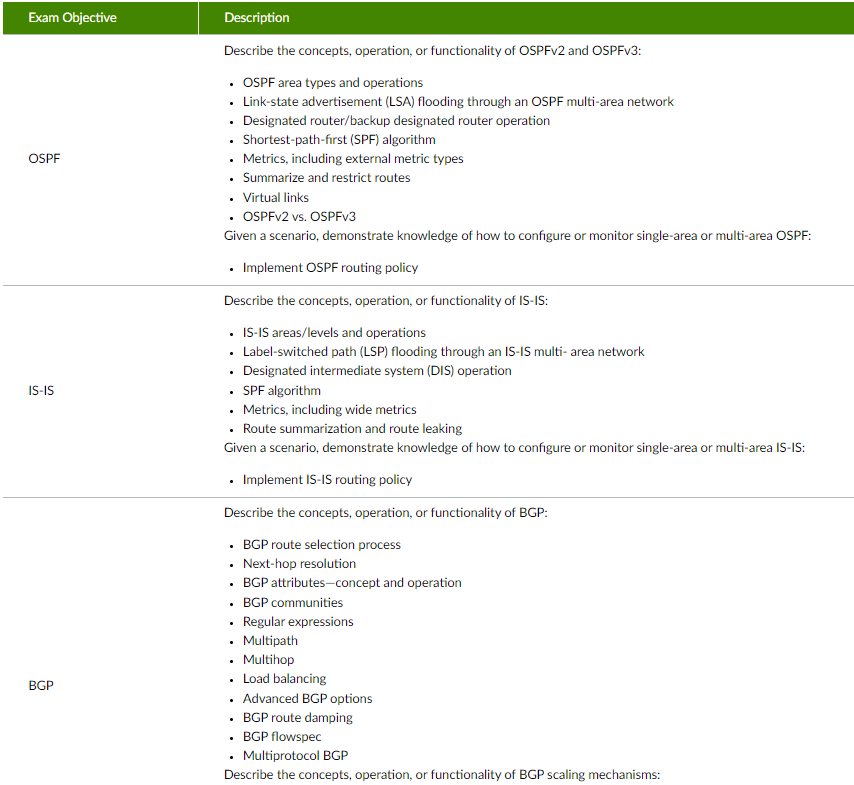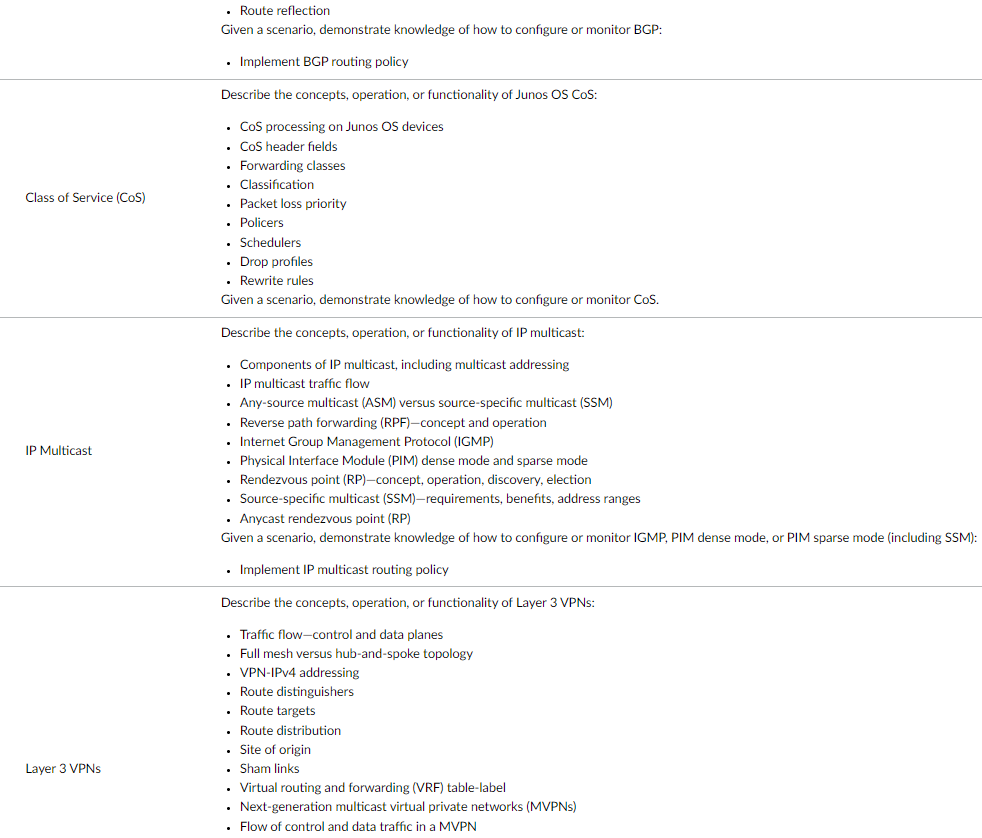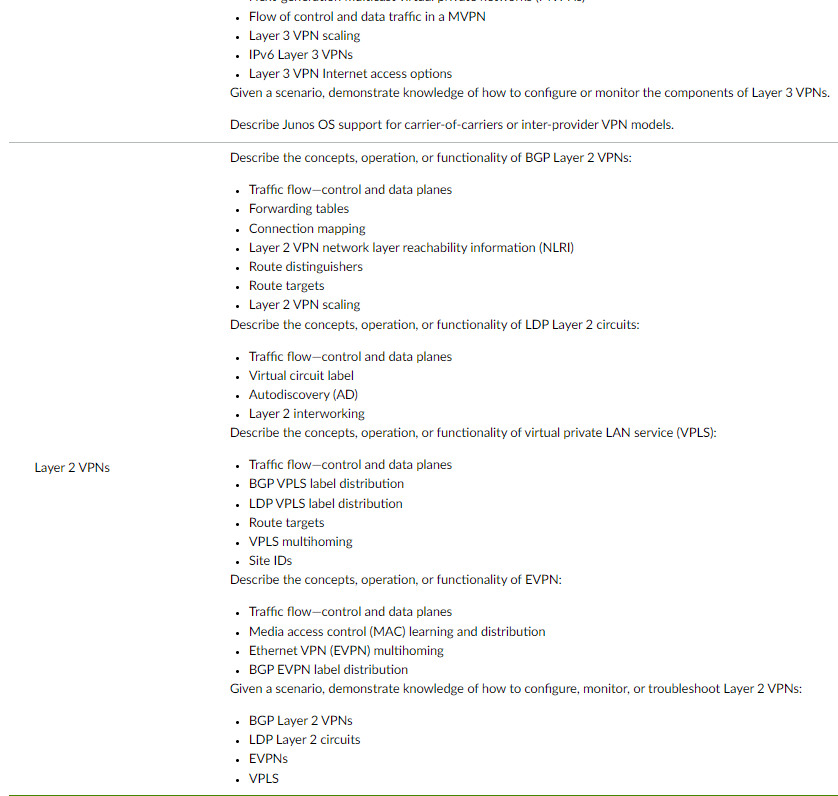JNCIP-SP Certification JN0-664 Practice Test Questions
If you are preparing for the Juniper JNCIP-SP JN0-664 exam, you may be wondering how to study effectively and pass the test with confidence. One of the best ways to prepare for the exam is to use PassQuestion JNCIP-SP Certification JN0-664 Practice Test Questions which are designed by experts who have extensive knowledge and experience in the JNCIP-SP domain. They cover all the topics and objectives of the JN0-664 exam and provide you with accurate and updated information. By using PassQuestion JNCIP-SP Certification JN0-664 Practice Test Questions, you can test your knowledge, identify your strengths and weaknesses, and improve your skills and confidence. You can also get access to online support and free updates for one year after purchase. PassQuestion JNCIP-SP JN0-664 practice test questions are your reliable and effective partner for passing the Juniper JN0-664 exam.

Service Provider Routing and Switching, Professional (JNCIP-SP)
The Service Provider Routing and Switching track enables you to demonstrate a thorough understanding of networking technology in general and Juniper Networks service provider routing and switching platforms. JNCIP-SP, the professional-level certification in this track, is designed for networking professionals with advanced knowledge of routing and switching implementations in Junos. The written exam verifies your basic understanding of advanced routing technologies and related platform configuration and troubleshooting skills.
This track contains four certifications:
JNCIA-Junos: Junos, Associate. For details
JNCIS-SP: Service Provider Routing and Switching, Specialist.
JNCIP-SP: Service Provider Routing and Switching, Professional.
JNCIE-SP: Service Provider Routing and Switching, Expert.
Exam Details
Exam Code: JN0-664
Prerequisite Certification: JNCIS-SP
Delivered by Pearson VUE
Exam Length: 90 minutes
Exam Type: 65 multiple-choice questions
Software Versions: Junos OS 22.3
Exam Objectives



View Online Service Provider Professional (JNCIP-SP) JN0-664 Free Questions
1. Regarding VPLS, which two can be configured to prevent a loop when a CE is multihomed to a single PE? (Choose two.)
A. unique route target for each connection
B. Spanning Tree Protocol
C. LAG
D. VLAN tagging
Answer: B,C
2. Referring to IS-IS, what is the purpose of a mesh group?
A. to prevent redundant flooding of LSPs in a full mesh network
B. to guarantee delivery of LSPs in a full mesh network
C. to segment a router into multiple broadcast domains
D. to cause a router to flood LSPs to all members of a group
Answer: A
3. Which function allows an OSPF network to span a L3VPN?
A. sham link
B. virtual link
C. OSPF direct peering
D. route redistribution
Answer: A
4. Which two statements are true regarding EVPN?(Choose two.)
A. Multihomed CEs require a unique ESI for each of the links.
B. With a multihomed CE, both PEs must use the same ESI when connected to the same CE.
C. The ESI for all sites in an EVPN domain must be the same.
D. The ESI for each site in an EVPN must be unique.
Answer: B,D
5. Junos devices use the token bucket algorithm for policing. Which two statements are true regarding the token bucket algorithm? (Choose two.)
A. Policers transmit streams of traffic at the maximum interface speed until the burst rate is reached.
B. Policers do not reduce the speed of an interface.
C. Policers reduce the speed of an interface.
D. Policers enforce gaps between transmitted packets.
Answer: B,D
6. Packets enter a Junos device and are classified with CoS. During the processing of the packet, the classification of the packets is changed.
Which two statements are true regarding default CoS rewrite on Junos devices? (Choose two.)
A. Bits associated with a DSCP traffic class are rewritten to match the new traffic classification values.
B. Bits associated with MPLS traffic class are rewritten to match the new traffic classification values.
C. Bits associated with DSCP traffic class are not rewritten to match the new traffic classification values.
D. Bits associated with MPLS traffic class are not rewritten to match the new traffic classification values.
Answer: B,C
7. You have configured a L3VPN across your network and are using GRE tunnels for transit. Which two statements are true? (Choose two.)
A. The gre tunnel interface must be placed in the routing instance.
B. The tunnel interface must be added to inet.3.
C. Route reflectors cannot be used for route exchange.
D. Family MPLS must be enabled on the tunnel interface.
Answer: B,D
8. You are provisioning a L3VPN service for your customer. Customer traffic must leave your AS to reach a remote site. Which statement is true?
A. A single LSP can be created across AS boundaries.
B. GRE tunneling must be used to cross the peer AS.
C. A L3VPN must be used to cross the peer AS.
D. BGP can advertise labels to the peer AS.
Answer: D
9. You use OSPF as your IGP. You are configuring an MPLS overlay that crosses your network and want to configure engineered paths that use link colors for path selection.
Which action must you perform?
A. Configure [set protocols mpls no-cspf].
B. Configure traffic-engineering under [protocols ospf].
C. Use LDP signaled LSPs.
D. Configure [set protocols mpls traffic-engineering bgp-igp].
Answer: B
10. You are configuring an OSPF network. You want to break it up into three areas. Area 0 contains two routers. A router connects to each router in Area 0 with a single link.
Which two statements are true? (Choose two.)
A. The non-zero areas must have unique area IDs.
B. The routes from the non-zero areas will be summarized by default.
C. The routes from the non-zero areas will not be summarized by default.
D. The non-zero areas can both have the same area ID.
Answer: C,D
- TOP 50 Exam Questions
-
Exam
All copyrights reserved 2025 PassQuestion NETWORK CO.,LIMITED. All Rights Reserved.

